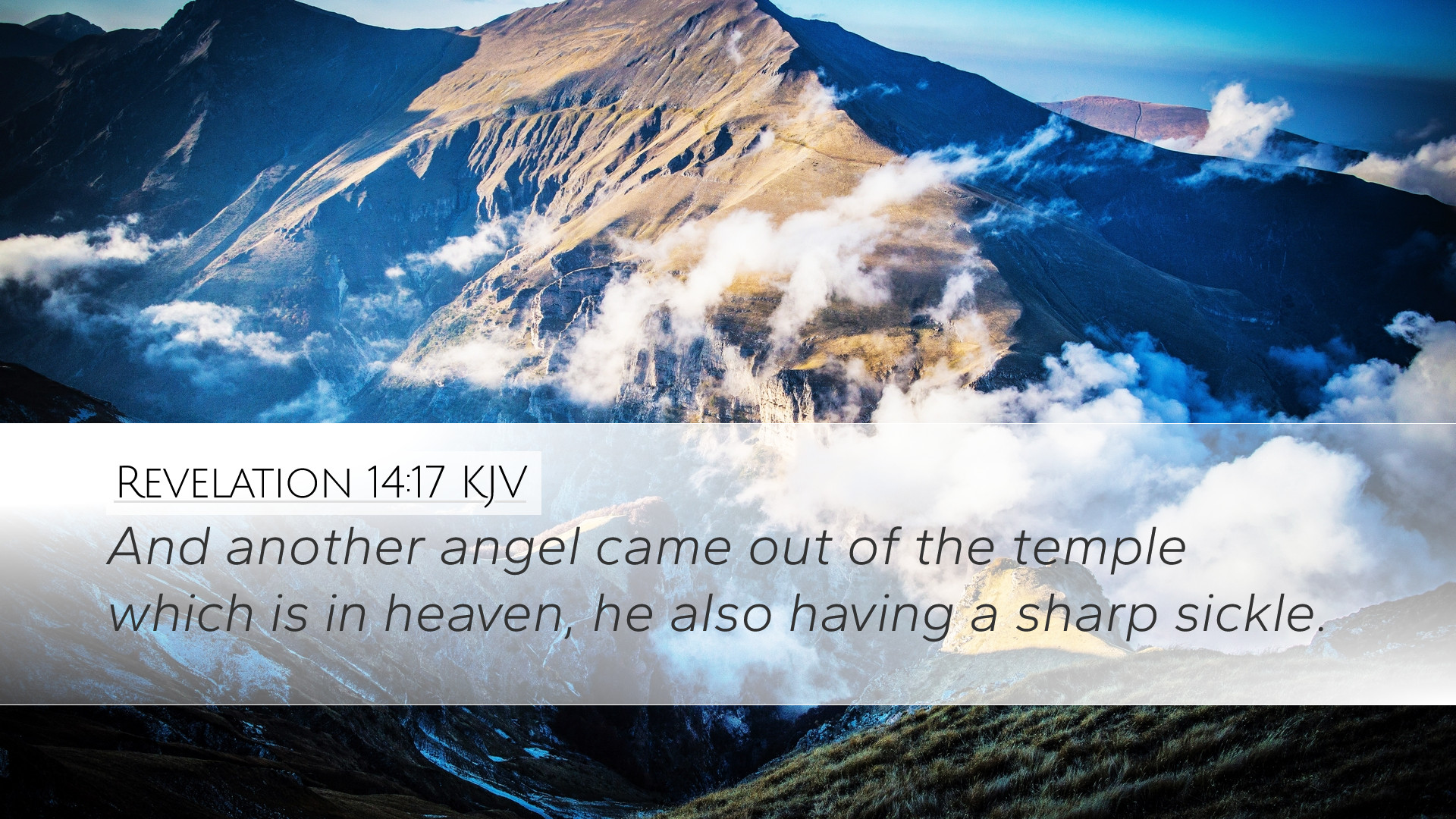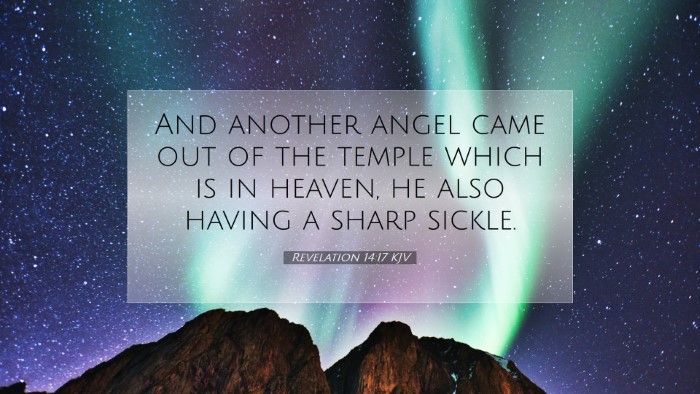Commentary on Revelation 14:17
Verse Context: Revelation 14:17 states, "And another angel came out of the temple which is in heaven, he also having a sharp sickle." This verse is part of a broader apocalyptic vision in the book of Revelation, which details the final events of human history and the consummation of God's kingdom.
Introduction
The imagery presented in Revelation 14:17 is steeped in symbolic significance regarding divine judgment and harvest. Drawing from esteemed public domain commentaries, this summary aims to provide a comprehensive understanding suited for pastors, students, theologians, and biblical scholars.
Analysis of the Angelic Figure
Divine Initiation: Matthew Henry suggests that the appearance of this angel from the temple signifies an action commissioned by God from His heavenly sanctuary. The temple represents the dwelling place of God, emphasizing that all judgments and actions are divinely ordained.
Symbolism of the Sharp Sickle: Albert Barnes notes that the sickle is a tool of harvest, symbolizing reaping. This imagery conveys a dual sense of gathering the righteous for eternal life and the imminent judgment of the wicked. The sharpness of the sickle implies readiness and precision in execution of divine judgment.
Theological Implications
Judgment and Justice: This verse underscores the theme of divine justice, a recurrent motif in Revelation. Adam Clarke highlights that the angel’s mission reflects the righteousness of God, who will not leave sin unpunished. The harvesting action denotes the conclusion of earthly things, ushering in the finality of God's plans.
Hope for Believers: The act of reaping is not solely one of judgment; it is also a fulfillment of God's promises to gather His people. Pastors can find encouragement in this imagery, emphasizing that amidst the chaos of the world, God's faithful will ultimately be united with Him.
Connections to the Larger Narrative
Contextual Placement: This verse resides within a larger section of Revelation that addresses the fate of those who align with the beast versus the faithful. The angel's proclamation comes after a sequence highlighting the eternal punishment of the wicked (Revelation 14:10-12) and precedes the depiction of the final harvest and judgment (Revelation 14:18-20).
Covenantal Fulfillment: Drawing from biblical typology, the sickle resonates with the agricultural traditions of Israel. The concepts of harvest and judgment echo the prophetic themes found in the Old Testament. Such connections provide a deeper understanding of God's covenant faithfulness and the fulfillment found in Christ.
Practical Applications
- Encouragement to Evangelize: Understanding the urgency represented by the harvest can compel believers to actively share their faith, aware that time is limited and the call to salvation is critical.
- Spiritual Readiness: The sharp sickle serves as a reminder of the need for personal readiness and spiritual vigilance, emphasizing the importance of living a life aligned with God's will.
- A Call to Acknowledge God's Sovereignty: As leaders and scholars study this passage, it serves to reorient their understanding of God's ultimate authority in both judgment and grace.
Conclusion
Revelation 14:17 resonates with profound theological weight and pastoral application. The presence of the angel with a sickle encapsulates the dual themes of divine judgment and the hope of salvation. Insight from public domain commentaries melds together historical context with spiritual insight, inviting deeper reflection on the nature of God's purposes in the world.


